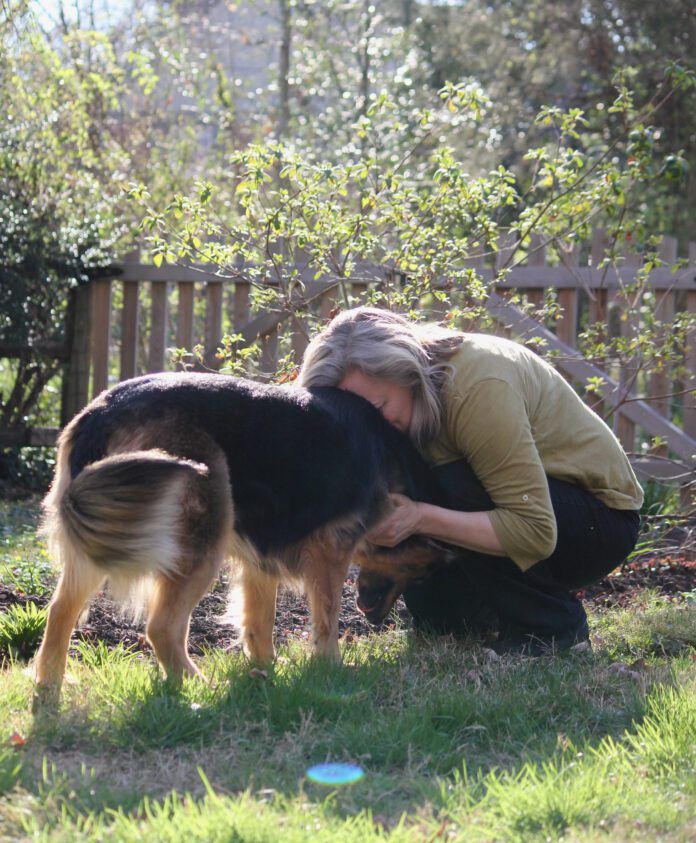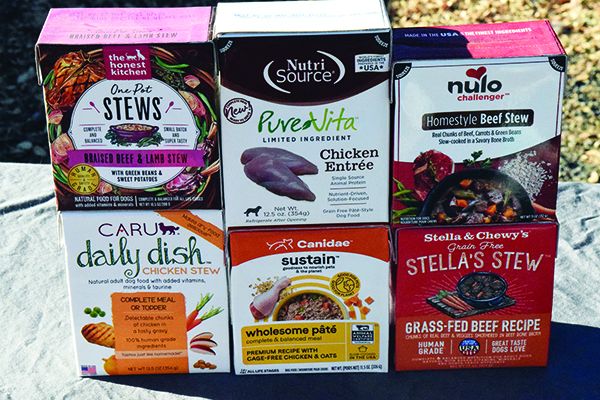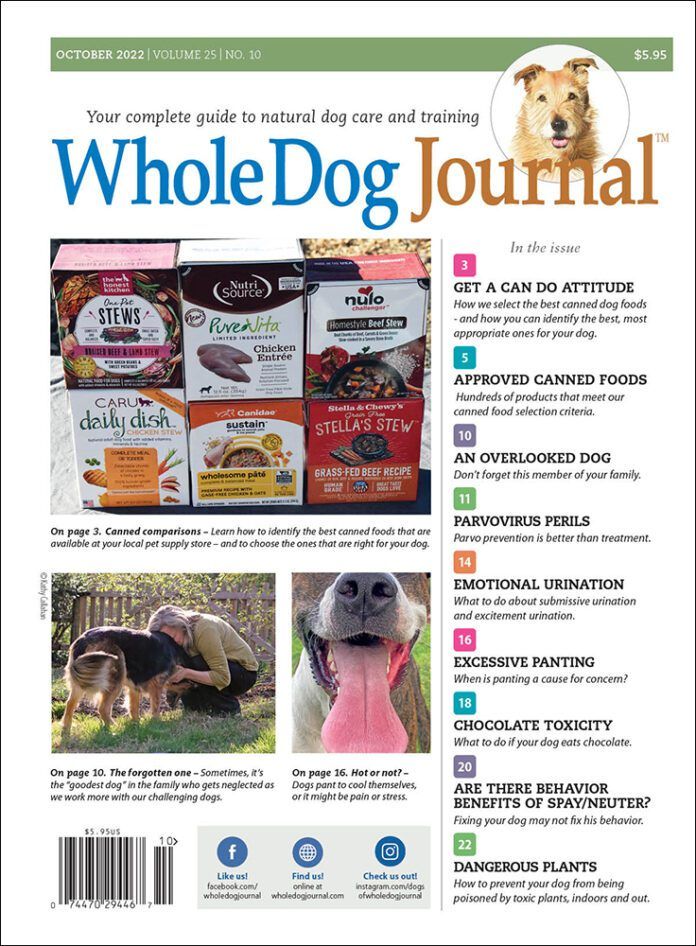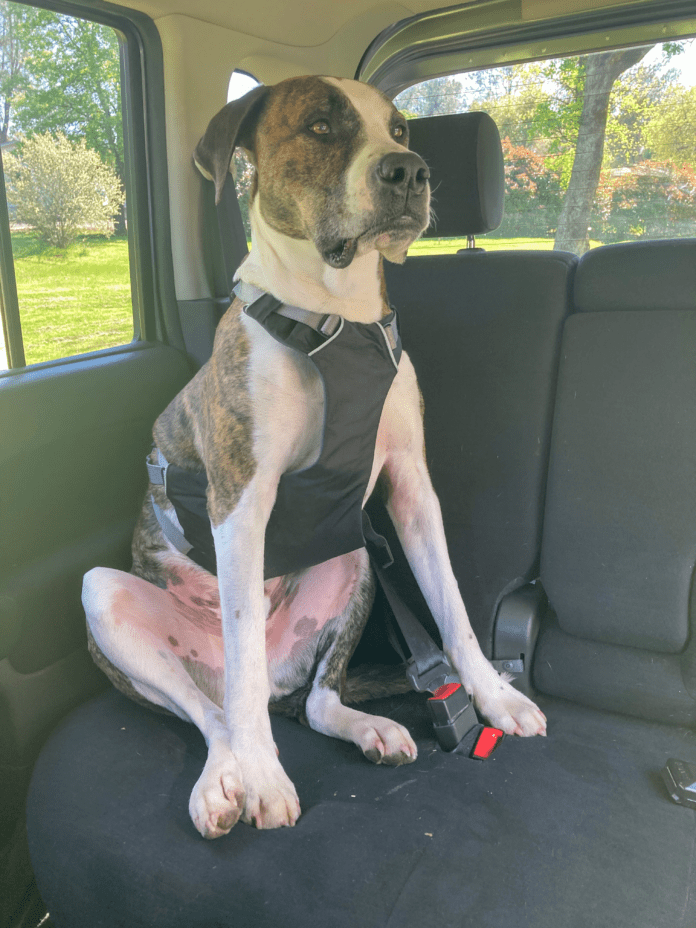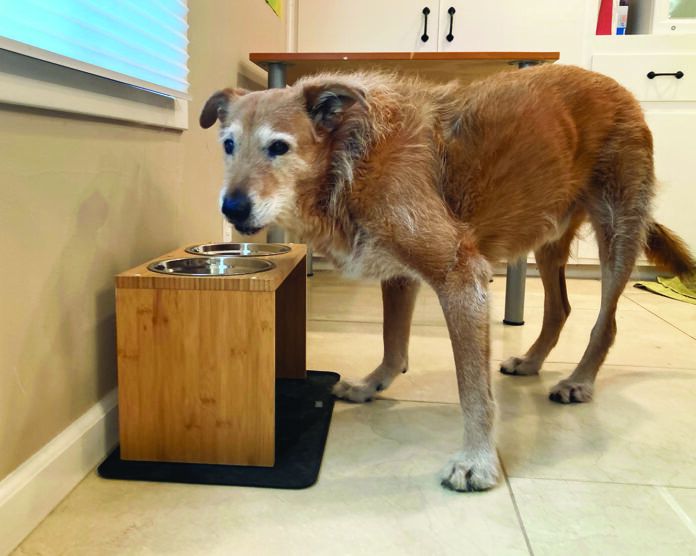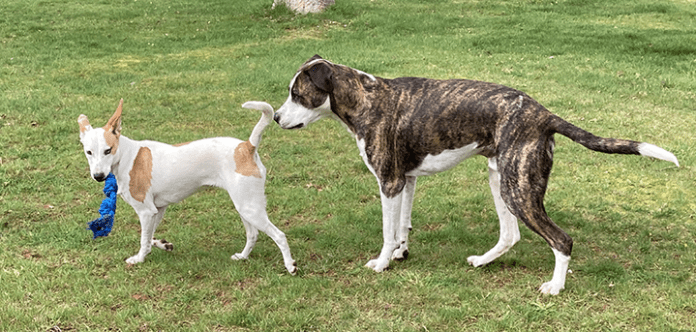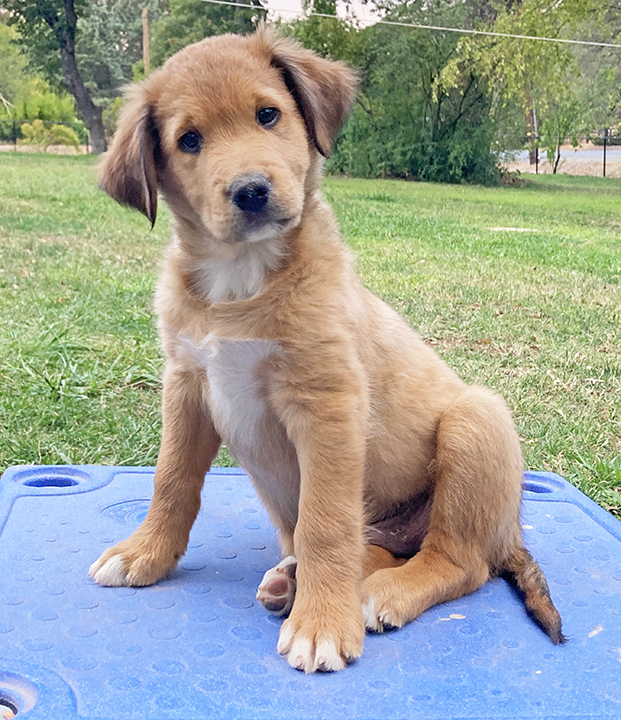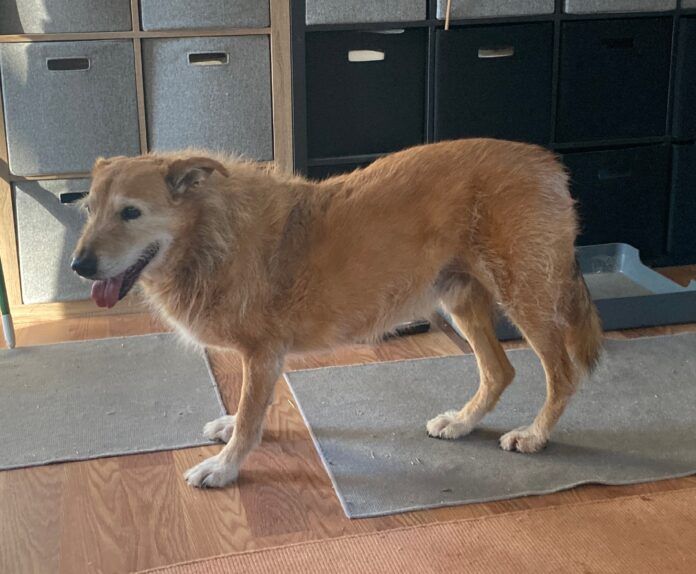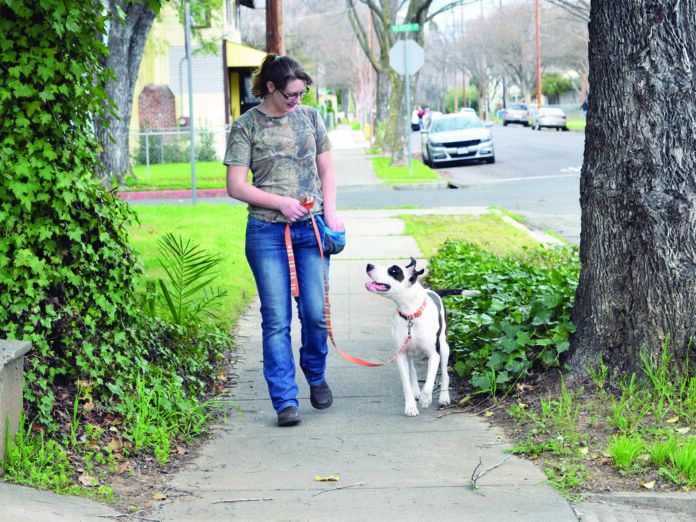Why did we choose the products that are on our 2022 “Approved Canned Dog Foods” list (SUBSCRIBER ONLY: Click here to see the full list) and why we didn’t select others?
To build the list, we start by looking for companies who make products that meet our selection criteria:
Good canned dog foods should have an animal protein source or sources in at least one of the top two spots on the list of ingredients. Water or broth may also be first or second on the list, as water is often added as necessary for processing. But the animal proteins should appear immediately after that. The amino acid profiles offered by animal proteins suit dogs better than the amino acid profiles from peas, potatoes, corn, soy, etc.
Canned food is a particularly good way to buy and store meat for your dog. It’s shelf-stable and can last for years; you don’t have to use it quickly (except after opening the can) or keep it cold (except after opening).
We look for whole, named sources of animal protein. “Whole” means meat, rather than meat-by-products, and “named” means you want to see “beef,” “chicken,” “lamb,” etc., rather than “meat.”
If plant proteins are present in the food, we’d like to see them play a minor role, appearing lower on the ingredient list – lower than the fifth or sixth position.
When vegetables, fruits, grains, and/or other carbohydrate sources are used, we’d like to see them present whole as opposed to a “fraction” or by-product. For example, we’d rather see “whole brown rice” than “rice flour.” By-products and fractions are often ingredients that are waste from human food manufacturing; they’ve already been processed, shipped, and stored before they will be mixed and processed again, losing vitamins along the way.
But honestly, we’d rather see simple, meat-heavy formulas without too many carb sources in canned foods. Carbs can be delivered to dog much less expensively through dry foods and/or fresh foods.
There are some attributes we don’t want to see in canned dog foods, too. We won’t accept any products with unnamed meats or fat sources (i.e., “meat,” “meat by-products,” “poultry,” “poultry by-products,” or “animal fat”).
We also don’t want to see any artificial colors, flavors, or preservatives. None of these are needed (or common, thankfully) in canned food.
If this all sounds very basic so far – it is! But if you look at the ingredients of all the canned dog foods in your local pet supply store – or, in particular, the products sold in grocery stores or big-box stores – very few of the biggest name canned foods you will find will meet these very minimal characteristics of good-quality dog foods.
SUBSCRIBER ONLY: Whole Dog Journal’s 2022 Approved Canned Dog Foods
RANGE OF CANNED DOG FOOD PRODUCTS
If you do look at the database – or go to the company websites and look at ingredient lists – you’ll notice that the foods on our list vary quite a bit in ingredient quality. But remember that even the lowest-quality food on our list is better than most products that are not on our list.
Keep in mind that quality is linked to price, and that price will, to a certain extent, indicate better-quality ingredients. It definitely helps identify more ethical ingredients, such as certified organic ingredients, wild-caught fish, grass-fed meats, and cage-free poultry.
In some cases, high prices correlate to products that are made in human-food manufacturing facilities, which means that all of the ingredients in them are “food grade” (legally human-edible), not “feed grade” (only for use in animal feed). All of the products being made in human-food manufacturing facilities are packaged in the lined cardboard cartons called Tetra-Paks – but be aware that not all foods packed in Tetra-Paks were made in a human-food manufacturing facility. Sadly, imitators abound wherever an advantage can be found.
You may be surprised to see some large companies that have historically made “mainstream” products (of generally lower quality) on our list. Some of the largest pet food makers have caught on that there is a market for high-end products, even in mass-market retail outlets.
You might also notice the return of a few companies that were previously on our “Approved Canned Foods” lists but that we had removed due to their inclusion animal plasma, an ingredient that we had a bad feeling about, especially after the bovine spongiform encephalopathy (BSE) crises in past years (which were caused by the use of brain and spinal cord tissues in animal feed).
This high-protein ingredient, harvested at beef and pork slaughter plants, has given us pause for ages – and recently, it’s begun to appear in more and more products. Porcine plasma has long been used by Nature’s Logic, which is the only company on our list that uses feeding trials to prove the nutritional adequacy of its foods (which costs a lot of money). While we liked everything else about Nature’s Logic’s products, its inclusion of plasma kept us away for years.
Our conversion to approval of this ingredient was slow, recent, and based on a very thorough presentation by a plasma-industry representative on the product’s safety and benefits. Most notably, the addition of animal plasma products in dog foods has been shown improve immune-system function.
SUBSCRIBER ONLY: Whole Dog Journal’s 2022 Approved Canned Dog Foods
YOUR MISSION: TO SELECT A CANNED DOG FOOD THAT SUITS YOUR DOG
We did our job; we’ve given you a list of foods that are far better than most. Now your task is to find foods that are appropriate for and “perform well” in your dog. Let’s define those:
“Appropriate for your dog” means that you need to read the ingredients label to make sure you are not buying a food that contains any ingredients he’s allergic to or intolerant of. In order to do that, you have to keep track of what you have been feeding him and how he’s responded to it.
It also means that you need to have an idea of how much protein and fat – or at least calories – your dog needs. Canned foods, being full of meat (we hope), tend to be very high in protein and fat. Many canned foods contain way too much fat, especially for overweight dogs or dogs who are prone to pancreatitis. You need to check the “guaranteed analysis” to make sure that you don’t choose a food that, for example, contains twice as much fat as your dog has been eating.
And finally, “appropriate” means you have chosen a food that is formulated for dogs of your dog’s life stage. You have to find the teeny, tiny print on the label that indicates whether it’s been formulated to be “complete and balanced” for “dogs of all life stages” or just “adult maintenance,” a standard that allows for less protein, fat, calcium, phosphorus, and a few vitamins. Puppies need to eat foods that are formulated for “growth” or for dogs “of all life stages,” a term that encompasses the puppy/growth requirements.
“Performs well” in your dog means that the product doesn’t upset your dog’s stomach, causing vomiting, diarrhea, or constipation. You want to improve or maintain your dog’s smooth digestion, build a nice stool (not too hard and not too soft), and reduce or eliminate excessive gas. The food should maintain or improve his health, skin, coat, appetite, and energy; neither make your dog fat nor thin; and, if he’s a puppy, provide for an appropriate rate of growth (not too fast, not too slow). As a bonus, your dog should like the taste and be glad to get it!
How the heck are you supposed to find the foods that perform like this in your dog? Well, like everything: It takes a little bit of economics (you can only buy what’s in your budget) and a little bit of science (keep track of what you are feeding and observe and record the results).
SUBSCRIBER ONLY: Whole Dog Journal’s 2022 Approved Canned Dog Foods


